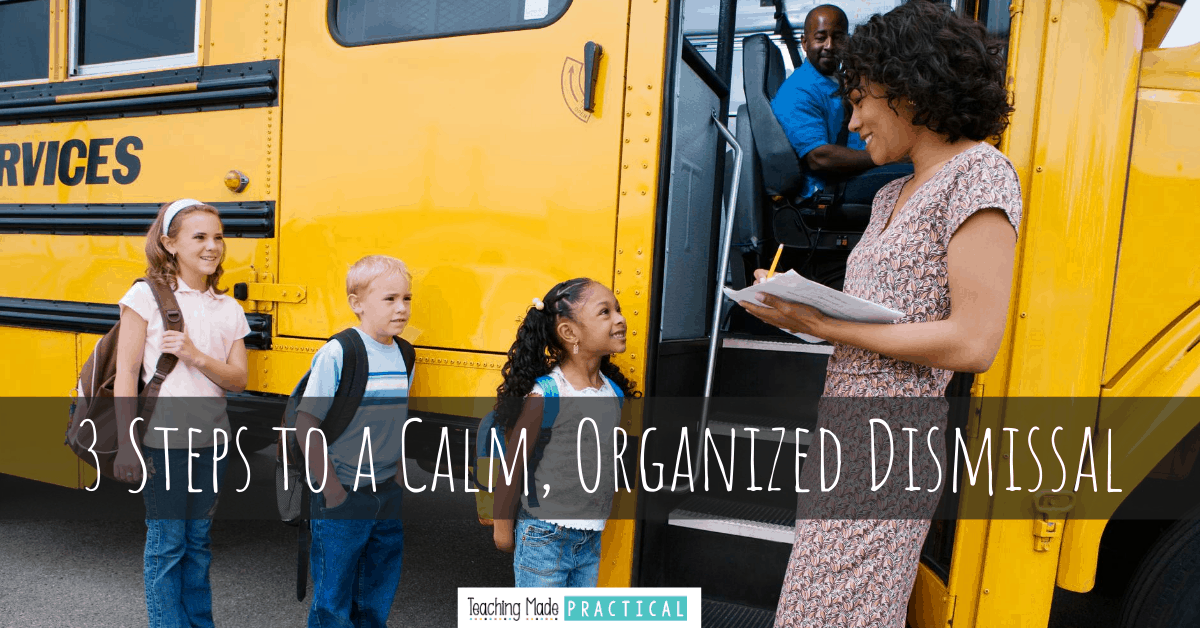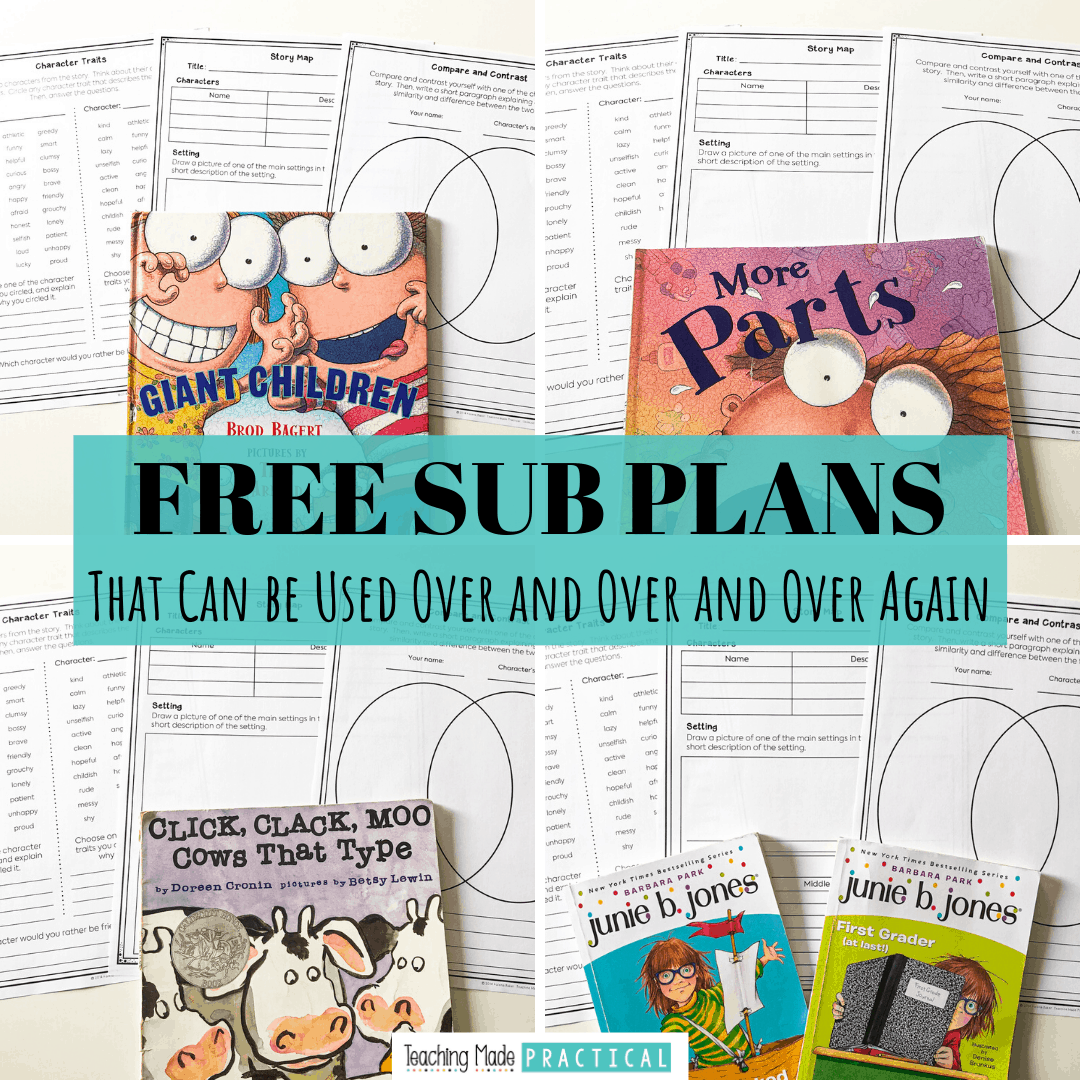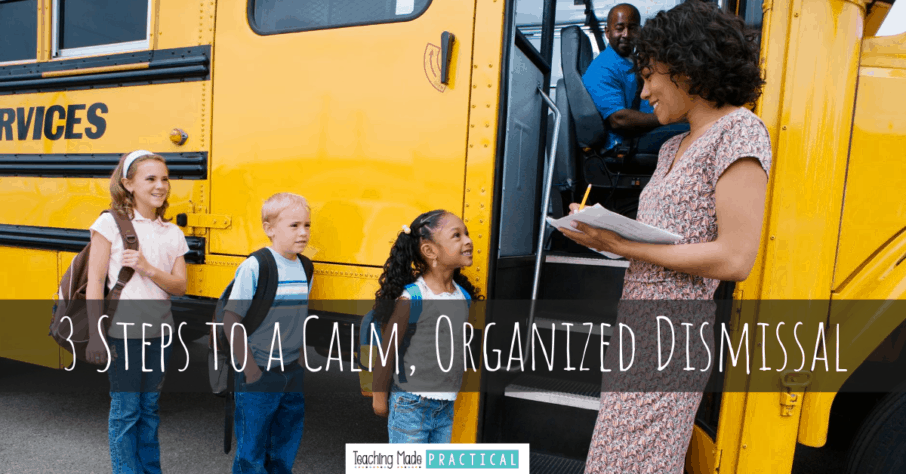
I've never seen a movie or TV show that showed an accurate depiction of what dismissal time is like in the elementary classroom. Usually, you'll hear a bell ringing and then see hundreds of students come running out the door screaming without any supervision or procedures in place.
3rd, 4th, and 5th grade teachers know that dismissal is NOTHING like that. Teachers are responsible for knowing who students went home with and how they got home. Dismissal has to be at least a little big organized in order to make sure all students are safe.
However, there is a little bit of truth to the scenes of kids storming out of the school. I've found that the end of the day is consistently the hardest time of day to keep students organized, quiet, on task, and motivated to follow directions. It's almost like something clicks in a student's brain once they put their backpack on that signals them that it is time to start acting crazy.
Every school I've worked with has had different procedures for handling dismissal. There are so many different ways for students to dismiss - bus, daycare, latchkey, picked up by a car, walking, riding a bike, etc.
Because there are so many different factors to consider, every upper elementary teacher has to customize their own dismissal procedures. However, there are some things that I think all teachers should plan for before the first week of school - taking the time to think about how to dismiss your class BEFORE dismissal comes is essential.
This free list might help you figure out other classroom procedures you need to come up with a plan for.
1. Be Very Clear About Your Expectations of Dismissal Procedures
The end of the school day is a great time to have students complete those annoying tasks like sharpening pencils and passing out all those flyers you get. Adding any task that you consistently forget to have students do to your dismissal procedures can be helpful.
My students had a list of things they were supposed to do at dismissal. At the beginning of the year, this list was posted in my classroom to help students (and me!) remember all of the steps.
- Listen to any announcements I had to share with them.
- Write their "behavior score" in their agenda. (This was a school wide expectation. I had to initial each score and write any behavior comments that parents might need to know.)
- Pack up flyers/homework/graded work. My paper passer outers were responsible for doing this at the end of the day.
- Other students that had end of day jobs - my pencil sharpeners, librarians, trash monitors, cutting assistant - were supposed to do their jobs. (Check out these classroom job ideas or these tips for making classroom jobs actually helpful.)
- Clean up their desk and the area around their desk.
- Get backpacks and pack them up - I called table groups one at a time to ease congestion.
- Stack chairs.
- Line up at the door.
Bus riders and latchkey kids lined up at the door first, in a specific spot. Everybody else that would be going outside to wait with me would line up ABC order behind them.
Your list will probably be a little (or a lot) different. It doesn't really matter what you include/don't include, as long as you know AHEAD OF TIME what you want your students to do and how you want them to do it.
2. Know How All of Your Students are Getting Home
Dismissal is usually a crazy time. If you don't have a plan in place for sorting out how all of your students are getting home, you'll probably regret it once dismissal comes around.
Pinterest has plenty of dismissal chart ideas if you're looking for something cute to help you organize students at the end of the day. I didn't use a chart, however, as I always guarded my limited wall space, wanting to use it for learning related tasks and word walls.
Instead, I simply had a list of where all my 3rd graders were supposed to go on my clipboard that I carried with me everywhere. This also allowed me to make notes and changes as needed. And this clipboard was one of my must-haves. I couldn't survive the day without it.
It doesn't really matter what you do, as long as you have some sort of plan for your 3rd, 4th, and 5th grade students.
Take the classroom outdoors with these fun outdoor scavenger hunts that cover a variety of skills. The 8 scavenger hunts include:
- 5 senses scavenger hunt
- nouns and adjectives hunt
- math review
- living and nonliving
- syllable sort
- ...and more!
Get 8 scavenger hunts for $2.00 and enjoy some sunshine with your students!
3. Start Strict and Practice Regularly
As the school year progresses, I've found that my dismissal procedures are always the first ones that students begin to disregard. By starting strict and practicing regularly, your 3rd, 4th, and 5th grade students will learn that you take the procedures seriously.
The first day of school, I would have my students practice our dismissal procedures right after lunch. I would try to allot at least 30 minutes to practice. This would give me plenty of time to set clear expectations for each step of our dismissal procedures. (We spent a lot of this time practicing how to stack chairs safely!) It also gave me time to figure out how each of my students would be going home.
Depending on what all you want your students to accomplish during dismissal, it might take you more or less time. Just make sure you allow PLENTY of time that first week of school to practice. If you start the school year off feeling rushed and stressed during dismissal, it will only get worse as the school year progresses.
I also wouldn't allow my students to talk to each other during dismissal. This makes my heart hurt a little, as I know how important it is for students to be able to talk to each other. My lessons always incorporated a lot of talking and moving around. But I found that it was easier to start the year off with the expectation that no talking would be allowed, and let students earn the privilege of talking as they proved they understood dismissal procedures.
I also found that when I didn't allow students to talk, they completed all of the steps to my dismissal procedures much more quickly. This allowed me to teach a little bit longer every day. After a lot of practice and minimal conversations, students could complete everything expected of them in 5 minutes or less.
If you find your students are getting bored with practicing, then these 17 fun ways to review procedures might be useful.
The crazier and less organized your dismissal procedures are, the more likely you are going to go home disappointed and unsatisfied with your day. A crazy dismissal can ruin an otherwise great day.
But ending the day on a structured, calm note can help make a huge difference in your ability to relax and recoup when you finally make it home for the night.
You can find other classroom management tips and ideas for back to school here.
Never Stress Over Sub Plans Again!

Make copies, find a fiction book, and you'll be ready for any emergency that comes your way!


